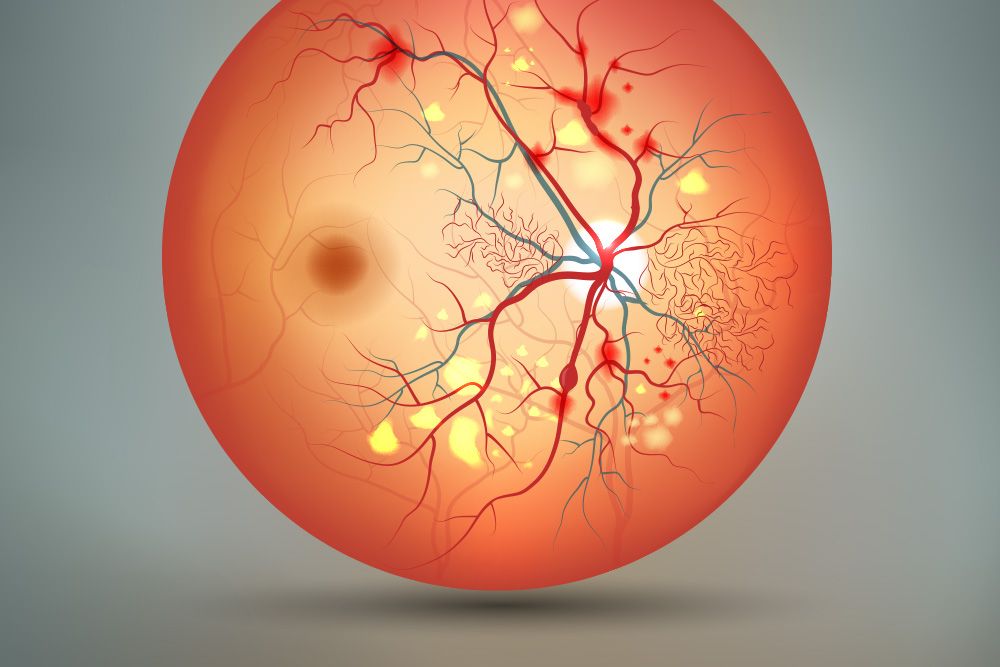Recognizing and Treating Inherited Retinal Disease

Inherited retinal diseases (IRDs) are a group of diseases — passed down via genetics — that affect vision, causing severe vision loss or, in many cases, blindness. This article offers an introduction to IRD, including an overview of everything you need to know if you or a loved one suspect you have an inherited retinal disorder or have been diagnosed with an IRD.
Inherited Retinal Diseases: An Overview
While there are different classes of inherited retinal disorders, there are common aspects to their genetic natures and several ways they can be diagnosed and treated.
Genetics and Inheritance Patterns of IRDs
IRDs are hereditary eye diseases passed down from family member to family member. As such, IRDs cannot be prevented. While there are several types of IRDs, their commonality is that they are caused by a defect in one or more of the genes that govern retinal cell structure and retinal function, resulting in vision loss.
Different types of inherited retinal diseases manifest at different ages, with some symptoms being apparent in infancy and others appearing later in life. The severity of the disease also varies by type. Many IRDs are degenerative as their symptoms worsen as a person ages.
Common Types of IRDs
The following is an overview of common types of hereditary eye diseases:
- Retinitis pigmentosa (RP). Approximately one in 4,000 people have retinitis pigmentosa, a group of diseases where the light-sensitive cells of the retina die. The first symptom people with RP experience is usually night blindness, followed by peripheral vision blind spots. Eventually, people with RP will also lose their central vision.
- Achromatopsia. It’s estimated that one in 30,000 people has achromatopsia, which is a disease affecting the cone cells in the retina. It is a form of color blindness that presents with other symptoms, including light sensitivity, involuntary eye movements, and blurred vision.
- Choroideremia. One in 50,000 males has choroideremia, which first manifests in childhood as night blindness. As the disease progresses, boys with this hereditary disease develop tunnel vision as they get older. Many, as they reach their later adult years, will eventually lose their sight altogether.
- Stargardt disease. Approximately one in 10,000 people have Stargardt disease, which causes damage to the macula, the middle part of the retina that allows people to see straight ahead. The symptoms usually manifest in childhood or early adolescence. And while vision is impaired, Stargardt disease rarely causes complete blindness.
- Leber congenital amaurosis (LCA). Two to three out of every 100,000 newborns are diagnosed with LCA, which causes loss of vision early on. This disease causes the cornea of the eye to be thin and cone-shaped rather than curved. Extreme farsightedness, extreme light sensitivity, and uncontrolled eye movements — as well as cross-eyes (strabismus) — are common symptoms.
- Cone-rod dystrophy. This group of inherited retinal diseases affects approximately one in 30,000 people. Usually beginning in childhood, symptoms of con-rod dystrophy progress and may include blurred vision, light sensitivity, center-vision blind spots, color blindness, and loss of peripheral vision.
How IRD is Diagnosed
A retina specialist is able to diagnose IRD through a comprehensive retinal examination and targeted diagnostics. They may employ one of more of the following:
IRD Treatment Options for Managing IRDs
While there may be options for inherited retinal disease treatments as well as effective management, most IRDs are incurable. Treatment and management protocols for IRD include:
- Genetic Counseling. Genetic counselors are professionals who will, where appropriate, refer patients to the proper healthcare professional — such as retinal specialists and or/ ophthalmologists — for evaluation and management of their IRD. Genetic counselors also connect patients and families with information resources and support groups within the IRD community.
- Gene Therapy. Gene therapy — replacing a faulty gene or adding a new gene in an attempt to stop disease progression, cure disease, or improve your body’s ability to fight a disease — has had some promising results for some forms of IRD.
- Glasses and other low vision aids. A retina specialist may recommend one or more of these low-vision aids to patients with IRD:
- Special glasses designed to enhance side-vision awareness
- Low vision, magnifying, or prismatic reading glasses
- Bioptic telescopic glasses
- Tele Microscopic or reverse telescopic glasses
- Hand-held or digital magnifiers
- Retinal Prosthesis. This developing technology, still in its nascency, is a form of inherited retinal disease treatment that uses microelectronic chips to convert light rays to neuronal impulses which then, in turn, are conveyed to the preserved connections in the brain.
Mid Atlantic Retina Specialists Diagnose and Treat IRD
While IRDs are not curable, early detection and diagnosis — as well as inherited retinal disease treatment — are vital to managing the disorder in the most effective manner possible. The doctors at Mid Atlantic Retina specialize in the diagnosis and treatment of everything from common retinal diseases to the most complex medical and surgical cases.
To learn more about the services the caring professionals at Mid Atlantic Retina provide, reach out to us to request an appointment today.
